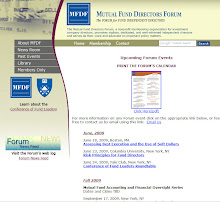On February 10, 2009, Treasury Secretary Timothy Geithner introduced to the Senate Banking Committee his plan for restoring financial stability to the nation's economy. Subtitled, "Deploying our Full Arsenal to Attack the Credit Crisis on All Fronts," the plan proposes to use full scope financial tools and resources to "address the uncertainty, troubled assets and capital constraints of our financial institutions as well as the frozen secondary markets that have been the source of around half of our lending for everything from small business loans to auto loans," and constitutes the Obama Administration's plans for deploying the second $350 billion tranche of funds authorized by the Emergency Economic Stability Act.
The plan lays out six key aspects intended to strengthen financial institutions so that they have the ability to support economic recovery.
1. Financial Stability Trust. This aspect of the plan is made up of three parts:
(a) a comprehensive assessment of what banks need to keep lending during this time of severe economic stress, including better transparency and disclosure to facilitate a more effective use of market discipline in the financial markets, coordinated action by the Fed, FDIC, OCC, and OTS to examine whether the major financial institutions have the capital necessary to continue lending and absorb systematic losses.
(b) a capital assistance program for financial institutions that have undergone the "stress test".
(c) a financial stability trust in which capital investments made by Treasury under the capital assistance program will be managed.
2. Public-Private Investment Fund ($500 Billion to $1 Trillion). This fund will be a publicly and privately financed fund that will be used to help cleanse financial institutions' balance sheets of "legacy assets, using a mechanism that allows private sector buyer to determine the price for current troubled and previously illiquid assets.
3. Consumer and Business Lending Initiative (Up to $1 Trillion). This initiative will support the purchase of loans by providing Treasury supported financing to private investors to help unfreeze and lower interest rates for auto, small business, credit card and other consumer and business credit. This is intended to help banks making loans for small buisnesses "bundle and sell those loans into a vibrant and liquid secondary market," instantly "recycle[ing] money back to financial institutions to make additional loans to other worthy borrowers."
4. Transparency and Accountability Agenda -- Including Dividend Limitation. "A major and legitimate source of public frustration and even anger with the initial deployment of the first $350 billion of EESA funds was a lack of accountability or transparency as to whether assistance was being provided solely for the public interest and a stronger economy, rather than the private gain of shareholders, bondholders or executives. Going forward, the Financial Stability Plan will call for greater transparency, accountability and conditionality with tougher standards for firms receiving exceptional assistance." This will include:
- Requiring firms to show how assistance from financial stability plan will expand lending;
- Committing recipients to mortgage foreclosure mitigation;
- Restricting dividends, stock repurchases and acquisitions;
- Prohibiting political interference in investment decisions;
- Limiting executive compensation; and
- Posting contracts and investment information on the web.
5. Affordable Housing Support and Foreclosure Prevention Plan. Treasury will announce a comprehensive plan that will drive down overall mortgage rates, commit $50 billion to prevent avoidable foreclosures, help bring order and consistency, require all financial stability plan recipients to participate in foreclosure mitigation plans, and build flexibility in into Hope for Homeowners and the FHA.
6. A Small Business and Community Lending Initiative. "The Treasury Department and the SBA will announce the launch of a Small Business and Community Bank Lending Initiative: This effort will seek to arrest the precipitous decline in SBA lending – down 57 percent last quarter from the same quarter a year earlier for the flagship 7(a) loans."
The full text of Secretary Geithner's opening remarks is available at: http://www.treas.gov/press/releases/tg18.htm
The "fact sheet" laying out the details of Geithner's Financial Stability Plan is available at: http://www.financialstability.gov/docs/fact-sheet.pdf





